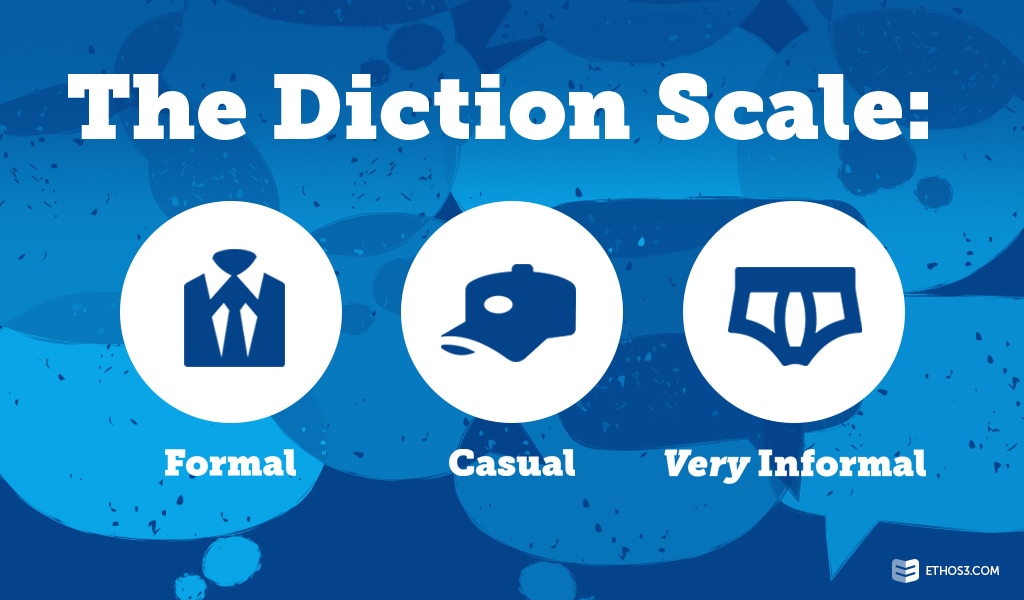The words we write and speak expose details about our identity, insight into our thoughts, and an overview of our relational approaches. A multitude of studies have evaluated one variable in conjunction with diction to come to fascinating conclusions. Researchers have confirmed the aggressive nature of young male bloggers’ language and the passivity with which adolescent females communicate online. They’ve discovered links between the use of optimistic language in earnings press releases to positive future market performance and vice versa. In public speaking, the words you choose convey a specific tone and combine to create your unique presentation style. Because every single word a presenter selects is so important to his or her public speaking success, a comprehensive knowledge of the literary element is necessary.
What is diction?
According to literarydevices.net, diction is the “style of speaking or writing determined by the choice of words by a speaker or a writer.” By analyzing the diction of speech or text, an individual is able to understand the magnitude of concepts and forge a deeper relationship with your content and overall message.
Types of diction
The types of words a person chooses typically fall within 3 distinct categories: formal, casual, and very informal.

This would be described as the denotation of the word. In addition to the denotation of your word choice, consider the connotations. For example, a writer or presenter could describe an opening scene using words like “bright,” “vibrant,” “hopeful,” “sunshine,” and “blue skies” – thereby forming a positive connotation.
What’s your style?
Several factors impact the style of your public speaking content. From the tone you hope to develop to the mood and attitude you aspire to convey, diction aids the process of content creation. Before putting pen to paper or fingers to keyboard in preparation for your next public speaking event, ask yourself the following questions:
What words can I use repeatedly to emphasize my main point(s)?
Which words could I insert into my presentation script or on my slides to evoke a certain feeling from audience members? What juxtapositions could I create to make a lasting impact on listeners?
What connotation do I want each word I say or write to have?
Will the words I use correlate with the theme of my presentation?
Your style may be tied to a brand or company guidelines, but the questions highlighted above could shed light on new routes you never thought your content could take. To further enhance your public speaking and presentation storytelling, check out these articles:
Create a Mood for Positive Perception of Presentation Messages
What Your Likability Quotient Means for Your Presentations
